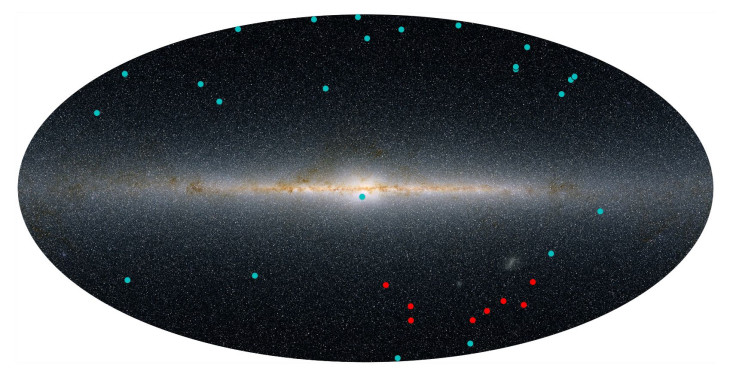Dwarf Galaxies Orbiting Milky Way Could Hold Vital Clues To Nature Of Dark Matter

Astronomers have discovered a “treasure” of several dwarf galaxies, about a billion times dimmer than the Milky Way, orbiting our galaxy. The discovery, jointly announced by a team of scientists from the University of Cambridge and astronomers associated with the Dark Energy Survey -- a multinational collaboration of research institutes in the U.S. and Europe -- could help scientists unravel the mysterious dark matter that constitutes over 84 percent of all matter in the universe.
The astronomers analyzed publicly available data collected using the Dark Energy Camera located at the Fermi National Accelerator Laboratory in the U.S. and discovered nine new neighbors of the Milky Way. Three of these faintly-lit bodies, located in the southern hemisphere near the Large and Small Magellanic Clouds, were confirmed as dwarf galaxies, which contain stars numbering in the thousands in contrast to our galaxy, which is believed to contain over 300 billion stars. The remaining six are thought to be globular clusters, which are similar to dwarf galaxies but are not held together by dark matter.
The closest of the three dwarf galaxies is located nearly 100,000 light-years away and is located in the constellation Reticulum. The farthest is 1.2 million light-years away in the constellation Eridanus.

“The discovery of so many satellites in such a small area of the sky was completely unexpected,” Sergey Koposov from Cambridge’s Institute of Astronomy and the study’s lead author, said, in a statement.
The discovery of these dwarf galaxies, the first in nearly a decade, could provide much needed data to test current theories on the origin and nature of dark matter -- the elusive force that holds galaxies together.
“The large dark matter content of Milky Way satellite galaxies makes this a significant result for both astronomy and physics,” Alex Drlica-Wagner of Fermilab said, in a statement. Because these bodies contain nearly 99 percent dark matter and very little visible matter, they are the perfect laboratories to test dark matter theories.
As of now, very little is known about this exotic matter except that it consists of particles that release high-frequency gamma rays when they annihilate each other. Although the hypothesized Weakly Interacting Massive Particle (WIMP) is currently the leading candidate to explain the composition of dark matter, even the most powerful particle accelerators have so far failed to detect them.
© Copyright IBTimes 2025. All rights reserved.






















